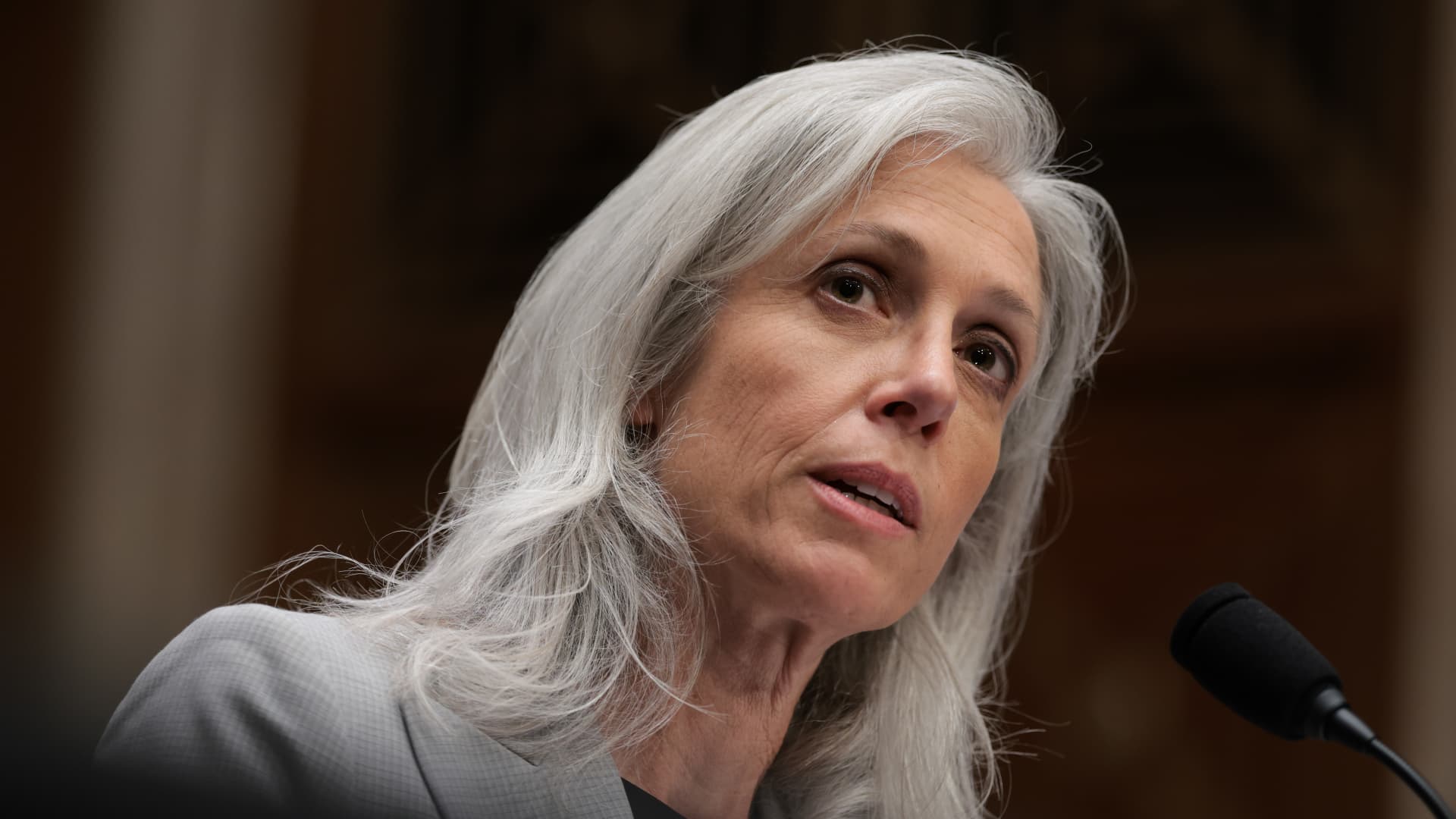The weight loss syringes of the “Wegovy”, “Ozempic” brands are sold in Avat Apotheke in Mitte, Germany.
Image Alliance | Image Alliance | Getty images
A version of this article appeared for the first time in the Healthy Bulletin returns from CNBC, which brings the latest medical care news directly to its entrance tray. Subscribe here To receive future editions.
Novo Nordisk 'S Weight loss of great success and diabetes medications.
Weekly injections can, in very rare cases, cause a severe eye condition that can lead to vision loss, the Security Committee of the European Medicines Agency said on Friday. It is the first time that a regulator confirms the side effect after previous studies in patients with type 2 diabetes that link Ozempic with the condition, known as anterior non -arteritic ischemic optical neuropathy (Naion).
The Committee has asked Novo Nordisk to add the ocular condition as a side effect of the “very rare” frequency on product information for medications containing semaglutida. That is the active ingredient in Wegovy Diabetesus pill, Ozempic and Novo Nordisk.
It is the last potential concern about popular LPG-1 such as Ozempic and Wogovy, which mimic intestinal hormones to regulate blood sugar and appetite to reduce appetite. The demand for drugs has been shot despite strong price labels and a handful of unpleasant side effects that are more commonly gastrointestinal, such as nausea and vomiting.
It is likely that it is not a great concern for the vast majority of patients: the ocular condition can affect up to 1 out of 10,000 people who take semaglutida for at least one year, according to the committee.
The committee said that people with diabetes who are exposed to the semaglutida are in a double increase in the risk of developing Naion compared to those who do not take it.
The ocular condition is the second most common cause of blindness due to optical nerve damage, after glaucoma. It is characterized by the loss of vision due to the decrease in blood flow to the front of the optical nerve, which connects the eye with the brain. The disease usually occurs without pain and more commonly affects people 50 years or older.
The committee said patients should stop treatment with semaglutid products if they experience side effect. Since December, he has been reviewing the findings of two Danish studies that link Ozempic with the condition in patients with diabetes.
In a statement, Novo Nordisk said it has concluded that the data “did not suggest a reasonable possibility of a causal relationship between Semaglutida and Naion.” The company said that the benefits of the semaglutida still exceed its risks.
But the drug manufacturer said he will collaborate with the EMA to update the labels of the semaglutid products.
One day before the Declaration of the Committee, the LPG-1 faced the scrutiny about another possible side effect related to the eyes.
A study, published on Thursday in the ophthalmology of JAMA and conducted by researchers at the University of Toronto, found that patients with diabetes who use GLP-1 medicines were twice as probabilities to develop macular degeneration related to neovascular age (NAMD) compared to those who do not take medications.
The study also found that longer patients were treated with these medications, the greater their risk of developing NAMD.
NAMD, commonly known as “wet” AMD, is the least but more aggressive form of age -related macular degeneration. It is the main cause of irreversible vision loss among older adults in the United States.
The researchers were based on Health Registries of Ontario, Canada. They analyzed almost 140,000 adults with type 2 diabetes to investigate a possible link between the use of LPG-1 and the Wet AMD. In the vast majority of cases, patients received semaglutida.
Novo Nordisk said that “semaglutidal efficacy and safety have been widely demonstrated in people with obesity/overweight with solid evidence to improve health results.”
Do not hesitate to send any advice, suggestion, stories ideas and data to Annika in [email protected].
The latest in Medical Care Technology: Here are the health technology companies that made the CNBC 50 Disruptor List
The 2025 CNB Disruptor 50 list is here, and several new health technology companies, including Transcarent, Open and Rad AI, cut this year.
The designation of Disruptor 50 is a classified list of innovative private companies that advance in innovative technology within its sector. Any independent property startups that was founded after January 1, 2010 could be nominated.
The nominated companies had to present qualitative information, as descriptions of their main business model, which were evaluated by a CNBC editorial staff team. They also had to send quantitative data, such as sales and numbers of users, which were evaluated by the CNBC Disrupting Advisory Board and the VC Advisory Board of 50 VC Disruptor.
Here are the health technology companies that obtained a place this year:
- #14: Transcariente. Founded by the Glen Tullman Medical Care Executive in 2020, Transcarent helps workers quickly access to care and navigate the benefits. The company has raised $ 940 million in total funds with an assessment of $ 3 billion.
- #17: Virta Health. Sami Inkinen (CEO), Stephen Phinney and Jeff Volley founded Virta Health in 2014. Startup helps patients to administer diabetes and obesity, and has raised $ 364.5 million at an assessment of $ 2.1 billion, according to Pitchbook.
- #23: Oura. This intelligent rings manufacturer has raised $ 200 million at an assessment of $ 5.2 billion. The company was founded by Petteri Lahtela, Kari Kivelä and Markku Koskela and launched in 2013. The consumer and laptop technology company is now directed by Tom Hale.
- #26: Yambic therapy. Founded by Tom Miller (CEO) and Fred Manby, Iambic Therapeutics uses artificial intelligence to accelerate the rhythm of drug discovery and development. The company was launched in 2020 and has raised $ 220 million.
- #37: Bio formation. Benjamine Liu (CEO) and Linhao Zhang founded Formation Bio in 2016. The company uses AI to accelerate the clinical development of candidates for promising medicines. He has raised $ 600 million at an assessment of $ 1.7 billion, according to Pitchbook.
- #41: rad ai. This startup uses generative to save radiologists and improve productivity. Doktor Gurson (CEO) and Jeff Chang founded the company in 2018. RAD AI has raised $ 143 million in funds at an assessment of $ 528 million.
- #43: Elevatebio. David Hallal, Vikas Sinha and Mitchell Finer founded the company of Genetic Medicines Elevatebio in 2017. The company has raised $ 1.3 billion and is now directed by Ger Brophy. Elevatebio advances treatments for cancer, multiple sclerosis, diabetes and other conditions.
- #47: Open. This startup uses the generative AI to automate the clinical documentation that doctors and nurses drive. Founded by Dr. Shiv Rao (CEO) and Zack Lipton in 2018, Abridge has raised $ 462.5 million at an assessment of $ 2.7 billion.
Perhaps, as expected, some of the main players of the AI took the five best places in this year's list. Anduril, an Autonomous Defense Company, obtained first place, followed by Openai, Databricks, Anthrope and the Canva Design Platform.
Together, these five companies have a combined assessment of just under $ 500 billion, which is more than the total combined assessment of almost all disruptor lists 50 past of the last 12 years. A sign of the times, no doubt.
Read the complete disruptor list 50 here. Read more about the selection process here.
Do not hesitate to send any advice, suggestion, stories ideas and data to Ashley at [email protected].












